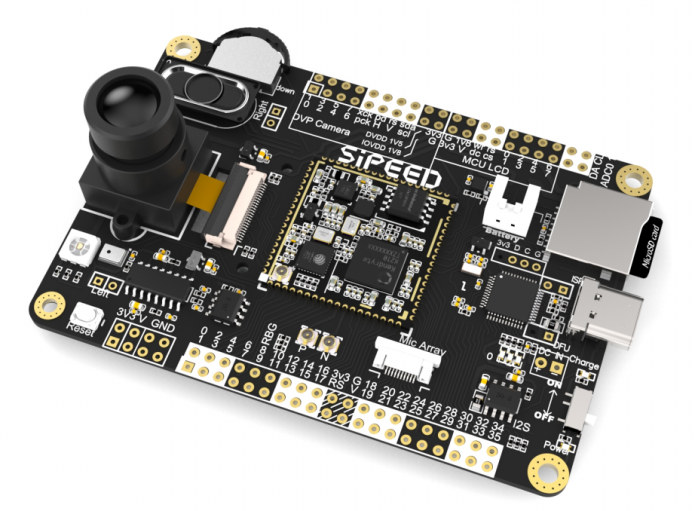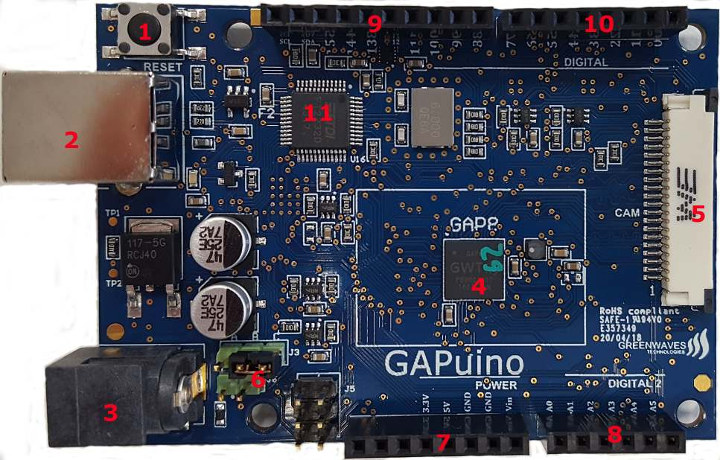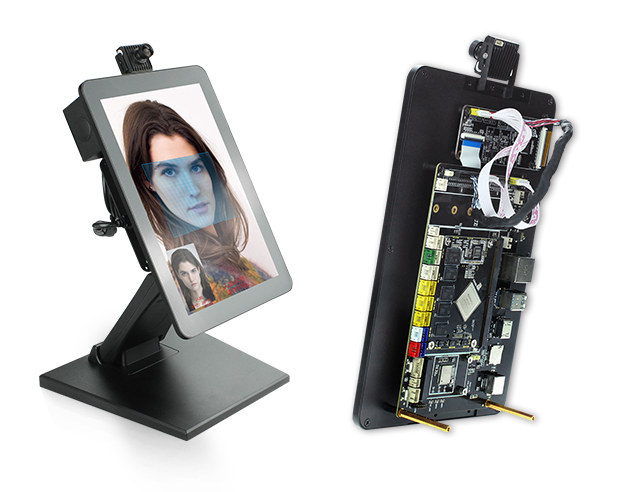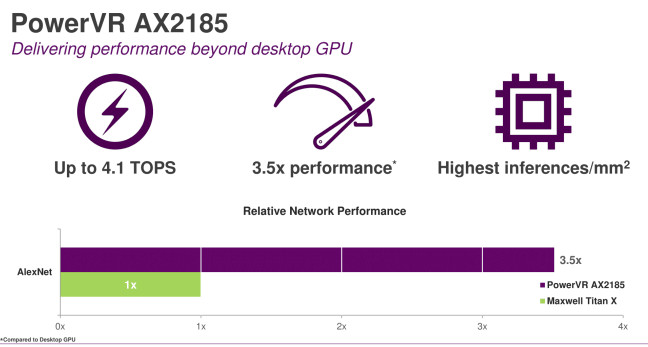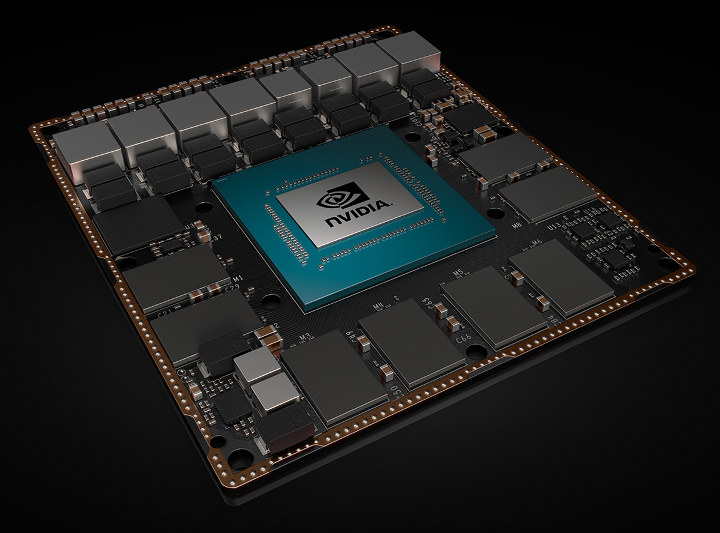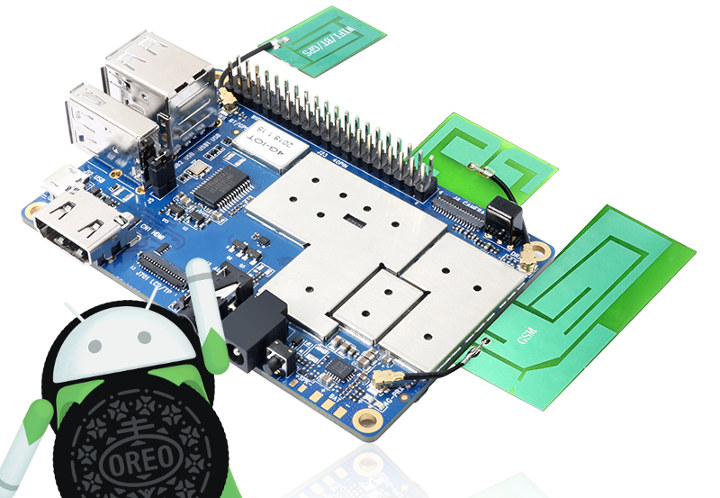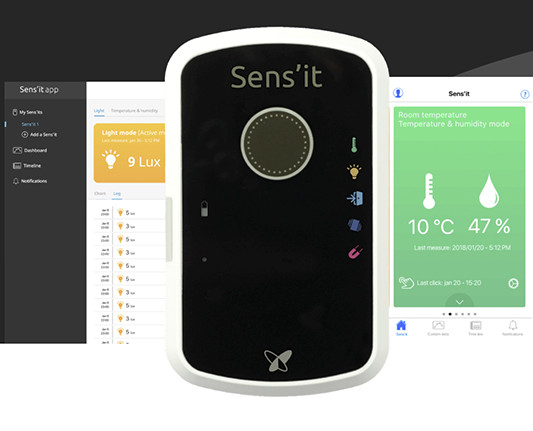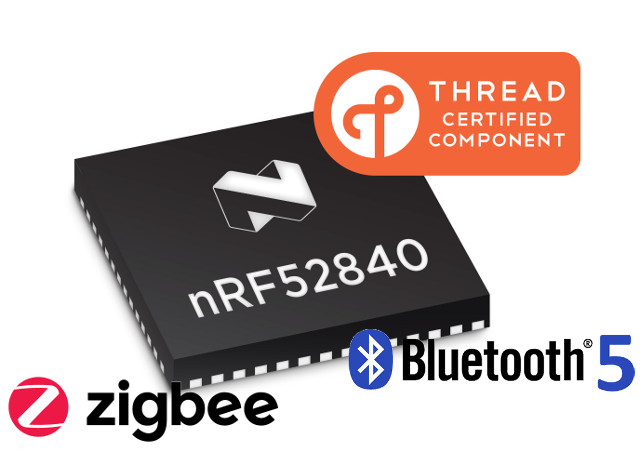Sipeed M1 (aka MAIX-I)is a compact module based on Kendryte K210 dual core RISC-V processor designed for low power artificial intelligence workloads at the edge, such as face detection, object recognition, or audio processing. The module and some development boards are available on Taobao for the Chinese market, as well as YOYCart for the rest of the world, but the company has now launched several MAIX boards based on M1 module through an Indiegogo campaign with price starting at just $5 a piece. Sipeed MAIX Bit (aka MAIX Micro) is the cheapest one at $5 (early bird) / $6 with the following specifications: SoC – Kendryte K210 dual core 64-bit RISC-V processor @ 400 MHz (overclockable up to 800 MHz) with KPU CNN hardware accelerator APU audio hardware accelerator with support for up to 8 mics, up to 192 KHz sample rate FPIOA (Field Programmable IO Array) mapping 255 functions to […]
GAPUINO GAP8 is a $229 RISC-V MCU Developer Kit for A.I. Applications
GreenWaves GAP8 is a low power RISC-V “MCU class” processor with eight compute cores optimized for artificial intelligence applications, and its main selling point is the ability to do tasks like computer vision or audio processing at very low power, even good enough to run on batteries. When we first covered GAP8 RISC-V processor at the beginning of the year, the company also mentioned a development kit comprised of GAPDUINO Arduino compatible board, a sensor board, and a QVGA camera module to experiment with the solution. The board and development kit are now easier to purchase as the devkit is sold on SeeedStudio for $229. GAPuino board specifications: SoC – GAP8 IoT Application Processor with 8x RISC-V compute cores, 1x RISC-V fabric controller core delivering up to 200 MOPS at 1mW and >8 GOPS at a few tens of mW Memory / Storage – HyperBus combo DRAM/Flash with 512 Mbit […]
Firefly Baidu Face Recognition Kit Comes with Monocular, Binocular, or Structured Light Camera
Firefly AIO-3399J industrial board comprised of a Rockchip RK3399 SoM and a baseboard offering plenty of I/O & connectivity options has been bundled with various other accessories including a 10.1″ touchscreen display, and cameras to create a development platform for Baidu AI offline (aka “at the edge”) face recognition technology. The development kit is available in different variants with either a monocular camera, a binocular camera, or a structured-light camera. There’s also a deluxe kit with WiFi and a stand. Baidu Face Recognition Kit key specifications: SoC – Rockchip RK3399 hexa-core big.LITTLE processor with dual core ARM Cortex A72 up to 2.0 GHz and quad core Cortex A53 processor, ARM Mali-T860 MP4 GPU with OpenGL 1.1 to 3.1 support, OpenVG1.1, OpenCL and DX 11 support System Memory – 2GB DDR3 RAM Storage – 16GB eMMC 5.1 flash, micro SD card slot Display – 10.1″ 1280×800 capacitive touch display Connectivity – […]
Imagination Unveils PowerVR AX2185 and AX2145 Neural Network Accelerators (NNA)
Imagination Technologies introduced PowerVR Series2NX neural network accelerator (NNA) last year. At the time, the company claimed the NNA would deliver twice the performance at half the bandwidth over existing competing solutions, and that it was the first dedicated hardware solution with flexible bit-depth support from 16-bit down to 4-bit. What they did not announce last September were any specific parts. But they’ve just done that today with PowerVR AX2185 and AX2145 NNAs “designed to enable high-performance computation of neural networks at very low power consumption in minimal silicon area”. PowerVR AX2185 PowerVR AX2185 is said to be the highest performing neural network accelerator per mm2 in the market with eight full-width compute engines delivering up to 4.1 TOPS (Tera Operations Per Second), or 2,048 MACs/clock. AX2185 NNA can deliver 3.5 times the performance compared to a desktop GPU. The NNA is best suited for high-end smartphones, smart surveillance and […]
NVIDIA Introduces Jetson Xavier Devkit and Isaac Robotics Software
NVIDIA Xavier was first unveiled in September 2016 as an artificial intelligence SoC with eight NVIDIA Custom 64-bit Arm cores, a 512-core Volta GPU, 8K video encoding and decoding, and a computer vision accelerator (CVA) now called NVDLA (NVIDIA Deep Learning Accelerator). Earlier this year, the company announced Xavier was sampling, and DRIVE IX & DRIVE AR SDKs for the automotive market. On the eve of Computer 2018, NVIDIA has introduced Jetson Xavier development kit, as well as Isaac robotics software for autonomous machines. Jetson Xavier key specifications: SoC – NVIDIA Xavier with 8-core ARMv8.2 64-bit CPU, 8MB L2 + 4MB L3 512-core Volta GPU with Tensor Cores 2x NVDLA engines for deep learning 7-way VLIW Processor for vision acceleration VPU with dual 4Kp60 video decoding and encoding System Memory – 16GB 256-bit LPDDR4x | 137 GB/s Storage – 32GB eMMC 5.1 flash Display – 3x eDP/DP/HDMI at 4Kp60 | […]
Android 8.1 Firmware and SDK Released for Orange Pi 4G-IoT Board
When Orange Pi 4G-IoT board launched a few months ago, it shipped with a not so recent Android 6.0 operating system. But the good news is that Shenzhen Xunlong Software has now released Android 8.1 firmware for their Mediatek MT6737M quad core Cortex A53 LTE Cat 4 board, as well as the corresponding SDK. This makes it the cheapest Android 8.1 board with LTE connectivity available on the market so far as it goes for just under $50. The SDK is a large tarball (22.6 GB) split into 11 smaller files. It’s hosted on MEGA so download is fairly fast, but due to the size I had to install MEGA Sync software in order to download it easily. Once the download is complete, it’s not recognized in Nautilus, but you can extract the SDK as follows in a terminal:
|
1 2 3 |
cd 4G-IOT_Android 8.1 SDK cat x* > OrangePi_4G-IOT_Android8.1.tar.gz tar xvf OrangePi_4G-IOT_Android8.1.tar.gz |
This will take a while and extract over a million […]
Sens’it Discovery is a Sigfox IoT Solution with 6 Sensors
Sigfox has just launched Sens’it Discovery, which they describe as a “end-to-end IoT solution, which aims to accelerate the adoption of the IoT (Internet of things) among business and technical professionals”. The solution is comprised for Sens’it 3 device with 6 sensors, sensit.io application, and Sigfox connectivity. Sens’it 3 hardware specifications: MCU – STM32 micro‑controller Connectivity TI CC1125 radio transceiver Sigfox Ready class 0U Frequencies – 868 to 869.7 MHz, 902 to 908 MHz, or 923.2 MHz (TX) / 922.2 MHz (RX), or 920 to 925 MHz depending on region Transmit Power emission – 14 dBm ERP (RC1), 22 dBm ERP (RC2), 10 dBm ERP (RC3), 22 dBm ERP (RC4) Sensors Thermometer (HTS221) – -40 to 120°C / Accuracy ± 0.5°C Humidity (HTS221) – 0 to 100 / Accuracy ± 3.5% rH (20 to +80% rH) Accelerometer (FXOS8700) – ±2, 4, 8 g / Accuracy 0.244, 0.488, 0.976 mg Magnetometer (FXOS8700) […]
Nordic Semiconductor nRF52840 Multiprotocol SoC Adds Support for Zigbee 3.0
Nordic Semiconductor nRF52840 was introduced in late 2016 as one of the first Bluetooth 5 ready SoC, and it’s the only part from Nordic that fully supports Bluetooth 5 longer range. But the chip is actually a multiprotocol SoC and beside Bluetooth, 802.15.4, Ant, Thread and 2.4 GHz proprietary are also supported. The company has now announced one more wireless protocol working on nRF52840: Zigbee 3.0. The company has released the first engineering release for Zigbee on nRF52840, but the production grade Zigbee 3.0 certified release is planed for H2 2018. The new protocol will be enabled in the S410 v6.0 SoftDevice release. Bluetooth and Zigbee can run concurrently meaning for example you could create an nRF52840 gateway to control Zigbee smart lights from a smartphone connected over Bluetooth 5. The SDK includes examples for concurrent operation of Zigbee and Bluetooth 5 for a smart light bulb and switch. The […]


